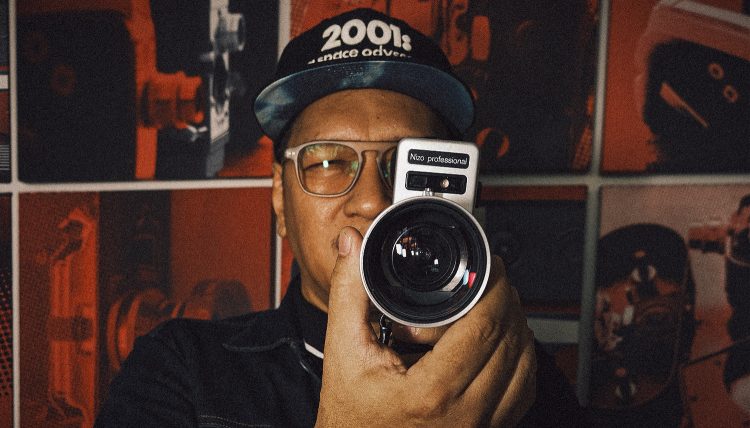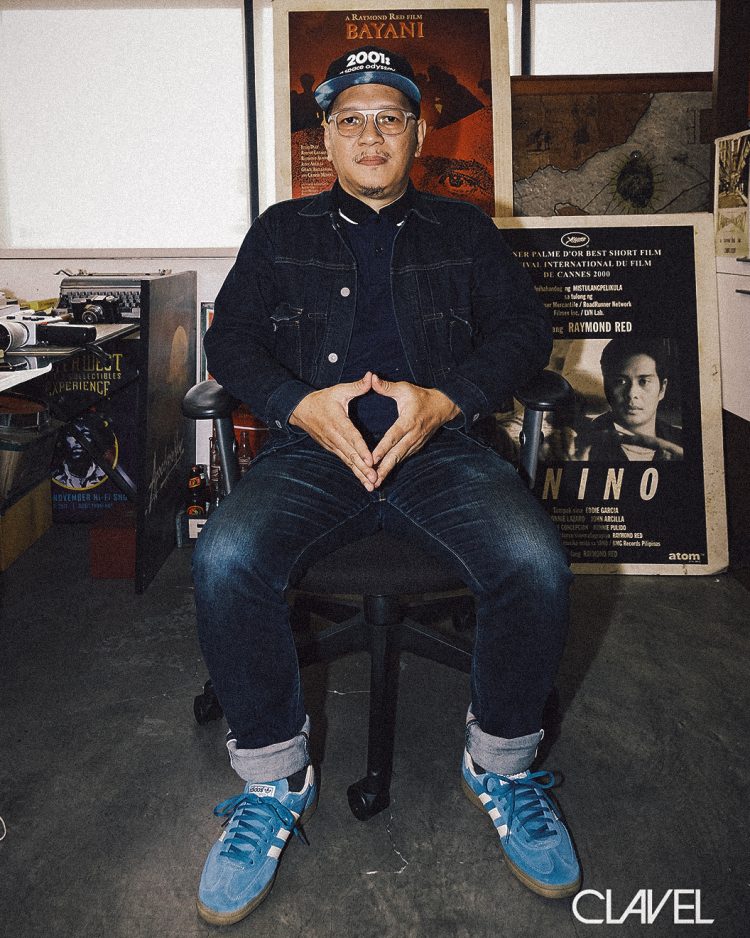
Director. Cinematographer. Educator.
Those are just a string of words to describe Cannes Palme d’Or Winner, Raymond Red. Film enthusiasts are probably familiar with his works on screen such as Anino (2000) and Manila Skies (2009), while others recognize and maybe learned from him first-hand during workshops and classes.
But before his name became synonymous with Super 8 and analog, director Raymond Red started out with a passion for painting and the visual arts, and slowly found his way to cinema.
Fortunately, we got to sit down with the Father of alternative cinema and dived deep into his journey and talked about a creative path less traveled.
“I never saw a career in filmmaking, I just wanted to do it like a painter.”

How It Started
A big chunk of the creative process is trying to see what fits best, and that’s exactly what this filmmaker did at first.
Starting off his journey with a keen interest in the visual arts, Raymond explored the medium with oil painting and photography. With the technical knowledge and curiosity for capturing images, he later tried out experimenting with a Super 8 camera, all with the intent of telling stories for self-expression.
After a few attempts with the camera Raymond realized that “you can do a lot of things with it [film] na mas mahirap gawin on a two dimensional painting”, with the director claiming that film offers a larger space for him to share his ideas.
One thing led to another, from teaching Super 8 workshops to his personal shoots, the director eventually released his first short film, Ang Magpakailanman (1982), all shot using Super 8. In Raymond’s mind, the film would only see the light of day with his friends and colleagues, but little did he know that it would lead him to a wider audience.
Raymond Red on gaining the film critics and film festivals’ attention:
“I never dreamed of that, all I wanted was to express some thoughts and ideas and feelings and show it to some students.”
How It Was
Today, when it comes to alternative and independent cinema, director Raymond Red’s name is almost always in the conversation. The filmmaker fondly recalls that back then, the movement for counter cinema was not planned nor formally talked about. He tells us that the more he worked on films, the more he heard about filmmakers working all over the Philippines and across different genres. From animation to documentary, creating a unique community outside of the usual mainstream cinema at the time.
Back then, mainstream cinema was very theatrical and the road to a director’s chair was to train under one for a couple years. It wasn’t as easy for newcomers to try out and express themselves. But that’s what Raymond did, all by shooting on his Super 8, and resorting to alternative means. From shooting guerilla style in the streets during production until the film’s distribution, done by showing the movie in different colleges and film festivals.
Now, as a teacher, Raymond always poses the question “When I teach experimental film, that’s what I asked my students. What is experimental today?”
With this question in their minds, the director goes on to explain that his work was helmed as alternative cinema in the 80s and 90s, because it went a different route from the mainstream.
“I had the right to say I’m a filmmaker, because I shot film and showed that to an audience.”
How It Is
Super 8 Camera. Another string of words often synonymous with the director’s name, from shooting his work on that camera to teaching workshops and offering knowledge to a new generation of budding filmmakers, Raymond definitely knows a thing or two about it.
“[People said] Film was ‘dying’ but it never really died” and the resurgent interest in analog film definitely attests to that. When asked about working with the medium, Raymond shares that “It’s very physical. And then when you’re doing the post production, you cut the film and then put tape to piece together scenes.”
When asked about what’s the thing about analog that makes creatives still gravitate towards it until today, the director says that each filmmaker has their own reasons. For some it’s nostalgic, having grown up with that technology, for others it’s simply a creative choice. While director Raymond poses a different perspective:
“You realize certain qualities that are hard to get and don’t experience when you’re shooting digital. A lot can argue that visual technology can emulate the look. Well, the look is there but the feeling is not. You need something else.”
How It’s Going
As said before, trying out new things is always part of a creative’s journey, and Raymond Red’s path is still on-going. He continues to check out and experiment with the latest technology, the director even recalls that when digital cameras were first introduced, he wasn’t immediately convinced. Still opting to use film as his medium, “I think maybe it’s because I painted, I still think cinematography and lighting as painting.”
Until HD cameras were released, and Raymond saw that: “I paint with light and the camera seemed to respond in the same way I’d seen in film.” While analog holds a special place for Raymond, he stressed the importance of putting emotions first and foremost, “It’s not the medium, it’s the spirit of filmmaking that was important.”
During lectures, the filmmaker also emphasizes that film, cameras, lighting, and all the tools are simply there to aid the director in telling their story:
“You have to be sincere. Why am I making this film? You should be able to answer that. As honestly as possible.”

Upon witnessing first hand cinema’s transition from film to digital, Raymond continues to carry on experimenting and learning. But one thing would remain a constant for him, and it’s buying a ticket and watching films inside the cinema.
Even with the availability of other ways to view movies, ultimately, the theater offers us one thing that other places cannot: the lack of control. There’s nothing like going inside a cinema, at a certain time and place, and fully immersing yourself to a director’s vision.
When the movie starts, there’s no pause or rewind. And director Raymond Red definitely agrees, “What it [cinema] really does is ignite our imagination. We get immersed in it, that’s the magic. It’s like real life, you can’t stop it.”
“When you’re watching a movie, you invest yourself into it. It’s not just there to please you.”
Don’t forget to check out Director Raymond Red’s Instagram page if you’re looking to catch his latest workshops.




